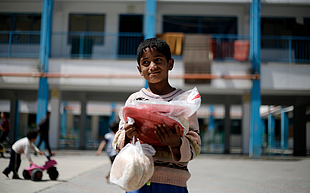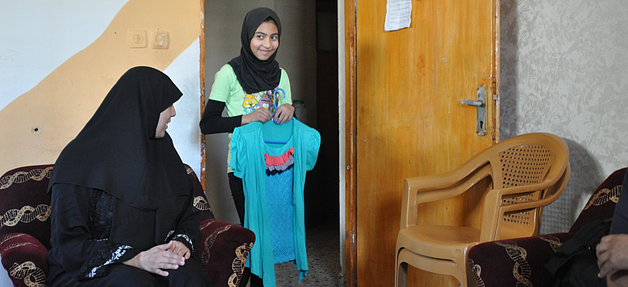Monthly Overview: March 2015
Uneven funding hampers humanitarian response efforts
 In the first quarter of 2015, OCHA recorded the lowest number of Palestinian fatalities since the second quarter of 2013, and the lowest number of injuries since the last quarter of 2011. Although the overall number of injuries caused by live ammunition declined compared with the previous quarter, the proportion of injuries caused by live ammunition increased significantly in the West Bank. Injuries sustained by children during incidents in which the children concerned were reportedly uninvolved were of particular concern.
In the first quarter of 2015, OCHA recorded the lowest number of Palestinian fatalities since the second quarter of 2013, and the lowest number of injuries since the last quarter of 2011. Although the overall number of injuries caused by live ammunition declined compared with the previous quarter, the proportion of injuries caused by live ammunition increased significantly in the West Bank. Injuries sustained by children during incidents in which the children concerned were reportedly uninvolved were of particular concern.
Also of concern, official data released this month indicates that between 1988 and 2014, the Israeli Civil Administration issued approximately 14,000 demolition orders against Palestinian-owned structures in Area C, of which almost 20 per cent have been implemented. Analysis indicates that the outstanding orders are concentrated in areas of high vulnerability. Approximately 300,000 Palestinians live in Area C, which covers over 60 per cent of the West Bank and where Israel retains nearly exclusive control, including over planning and zoning. It is almost impossible for most Palestinians to obtain a building permit in Area C, forcing residents to build without Israeli authorization and consequently face the risk of demolition.
Some positive developments are reported this month regarding the movement of goods and persons. In March, the first exports of agricultural products from Gaza to Israel took place since the imposition of the blockade in June 2007. In the first quarter of 2015, 234 truckloads exited Gaza, exceeding the 228 truckloads recorded during the whole of 2014. So far, these exports have included only tomatoes and eggplants, but Israel has also approved the export of furniture and textiles.
The increased exports and transfers from Gaza represent only a fraction of the over 5,700 truckloads which exited Gaza to Israel, the West Bank and international markets in the first half of 2007, prior to the blockade. Gaza’s contribution to overall Palestinian Gross Domestic Product (GDP) has declined from almost 36 per cent in 1994 to around 24 per cent in 2013, with real GDP per capita in Gaza expected to be 33 per cent lower by the end of 2014.[1]

Also in March, the Israeli authorities announced that men aged over 55 and women over 50 holding West Bank ID cards are now allowed to enter East Jerusalem and Israel without a permit. Although this easing is welcome, its social, religious and economic impact is expected to be limited, given the demographic profile of those eligible.
In order to address the most urgent humanitarian needs in the oPt, the Strategic Response Plan (SRP) was developed by the humanitarian community. The first in a series of updates details the achievements and gaps in the implementation of the SRP in the first quarter of 2015. Funding for the SRP is on course, with some 27 per cent of the US$705 million requested received as of 10 April, of which US$517 million is intended for Gaza. However, only one third of SRP funding has been allocated for “top priority” projects and the bulk disbursed so far favours four UN agencies out of the 77 partners who are participating in this year’s SRP.
[1] Real GDP per capita in the West Bank grew by more than 40 per cent over the same period. Palestinian Economic Bulletin: Special Issue December 2014: Gaza's Reconstruction.









